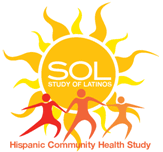| Title | Prevalence of incidental brain MRI findings of clinical relevance in a diverse Hispanic/Latino population. |
| Publication Type | Publication |
| Year | 2021 |
| Authors | Ivanovic V, Seiler S, Tarraf W, Crivello E, Martinez O, Lipton RB, Isasi CR, Copello TGomez, Talavera GA, Gallo LC, Lamar M, Testai F, Schneiderman N, Gellman MD, Daviglus M, González HM, DeCarli C, Lipton ML |
| Journal | J Neuroimaging |
| Volume | 31 |
| Issue | 6 |
| Pagination | 1166-1175 |
| Date Published | 2021 Nov |
| ISSN | 1552-6569 |
| Keywords | Brain, Cross-Sectional Studies, Female, Hispanic or Latino, Humans, Incidental Findings, Magnetic Resonance Imaging, Middle Aged, Prevalence, Risk Factors |
| Abstract | BACKGROUND AND PURPOSE: There is limited literature on the prevalence of incidental brain MRI findings in the Hispanic/Latino population, despite their increased prevalence of vascular disease and undertreatment of chronic conditions. The purpose of our study was to determine the prevalence of clinically relevant incidental findings on brain MRI examinations obtained as a part of the Study of Latinos-Investigation of NeuroCognitive Aging MRI (SOL-INCA-MRI) study.METHODS: Brain MRI examinations were obtained on 1389 participants in the SOL-INCA-MRI study, a cross-sectional ancillary study of the Hispanic Community Health Study, Study of Latinos, which is a longitudinal, community-based study. Study design of SOL-INCA-MRI involves imaging cognitively normal and participants with mild cognitive impairment. Brain MRI findings were categorized as Level 1 (normal), Level 1.5 (findings of unclear medical significance), Level 2 (potential medical concern), or Level 3 (medically urgent). This article focuses on Level 2 and Level 3 findings.RESULTS: The average age of the sample was 60.8 years (+/- 10.3 years), 66.1% were females. Level 2 and 3 findings were identified in 117 participants, (8.4%), of which 109 (7.8%) were recommended for medical follow-up (Level 2), and 8 (0.6%) were recommended for immediate medical attention (Level 3). Brain MRI findings consisted of chronic infarction in 33 (2.4%), vascular abnormality in 27 (1.9%), intracranial mass in 20 (1.4%), other intracranial findings in 28 (2.0%), and skull base/extracranial findings in 26 (1.9%) patients.CONCLUSION: Incidental findings of clinical relevance were common among SOL-INCA-MRI participants, but rarely required urgent medical intervention. |
| DOI | 10.1111/jon.12910 |
| Alternate Journal | J Neuroimaging |
| PubMed ID | 34288226 |
| PubMed Central ID | PMC10332335 |
| Grant List | R01 NS017950 / NS / NINDS NIH HHS / United States P30 AG010129 / AG / NIA NIH HHS / United States P30 AG072972 / AG / NIA NIH HHS / United States R56 AG048642 / AG / NIA NIH HHS / United States RF1 AG054548 / AG / NIA NIH HHS / United States P30 AG066546 / AG / NIA NIH HHS / United States U01 AG052409 / AG / NIA NIH HHS / United States |
Prevalence of incidental brain MRI findings of clinical relevance in a diverse Hispanic/Latino population.
MS#:
1020
ECI:
Manuscript Status:
Published
